 Technology peripherals
Technology peripherals
 AI
AI
 Multi-modal large models are preferred by young people online with open source: easily run 1080Ti
Multi-modal large models are preferred by young people online with open source: easily run 1080Ti
Multi-modal large models are preferred by young people online with open source: easily run 1080Ti
A "young people's first multi-modal large model" called Vary-toy is here!
The model size is less than 2B, it can be trained on consumer-grade graphics cards, and it can run easily on GTX1080ti 8G old graphics cards.
Want to convert a document image into Markdown format? In the past, multiple steps such as text recognition, layout detection and sorting, formula table processing, and text cleaning were required.
Now you only need one command:
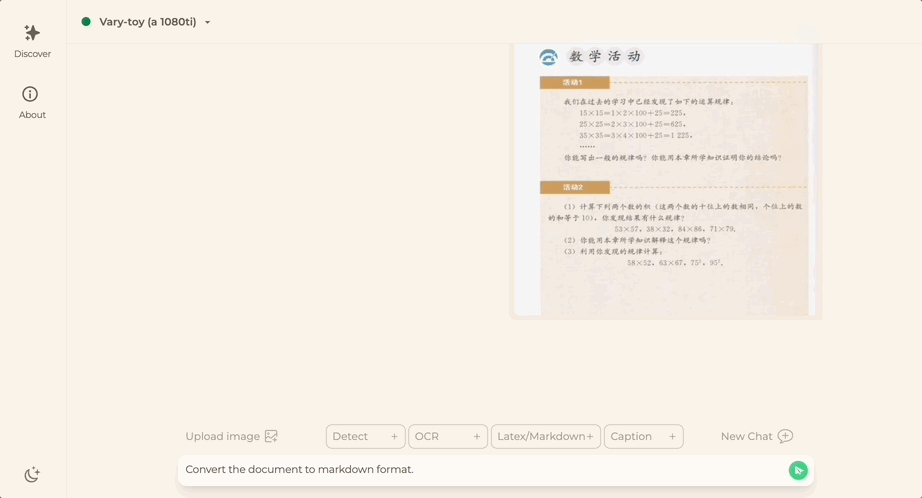
No matter Chinese or English, large sections of text in the picture can be extracted in minutes :
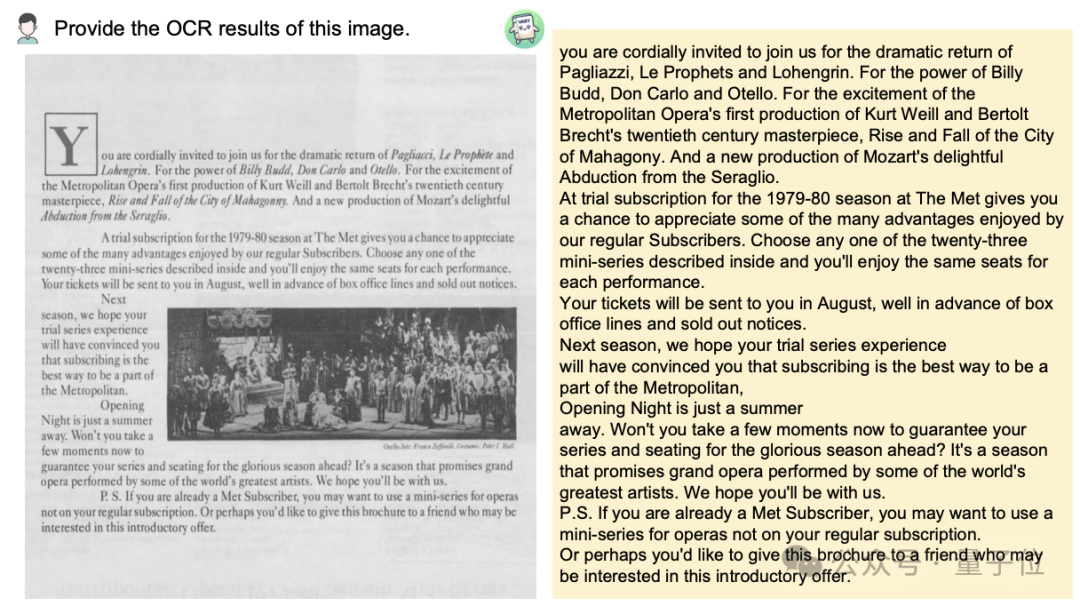
Object detection on a picture can still give specific coordinates:
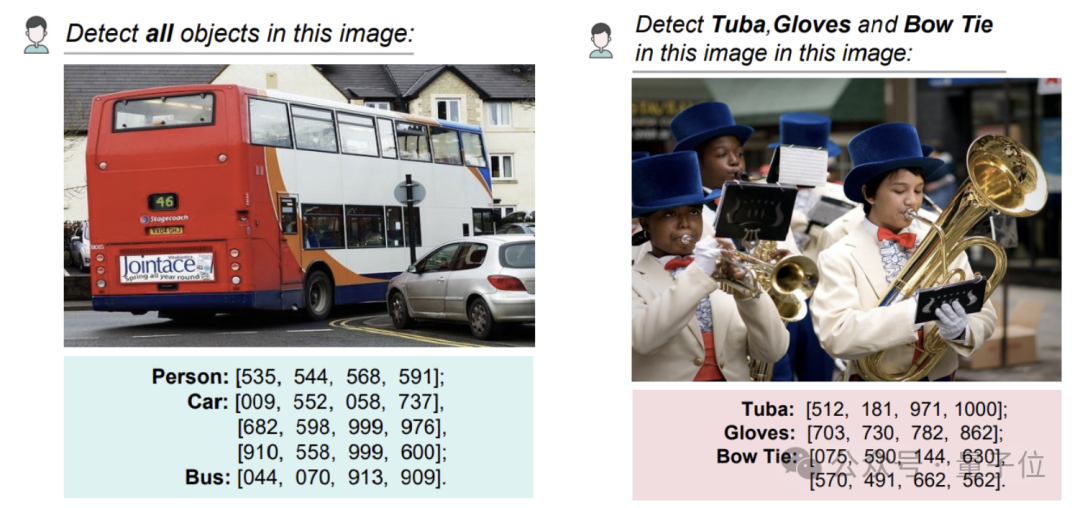
This The study was jointly proposed by researchers from Megvii, National University of Science and Technology, and Huazhong University of Science and Technology.
According to reports, although Vary-toy is small, it covers almost all capabilities in current mainstream research on LVLM (Large Scale Visual Language Model): Document OCR recognition (Document OCR ), visual positioning(Visual Grounding), image description(Image Caption), visual question answering(VQA).
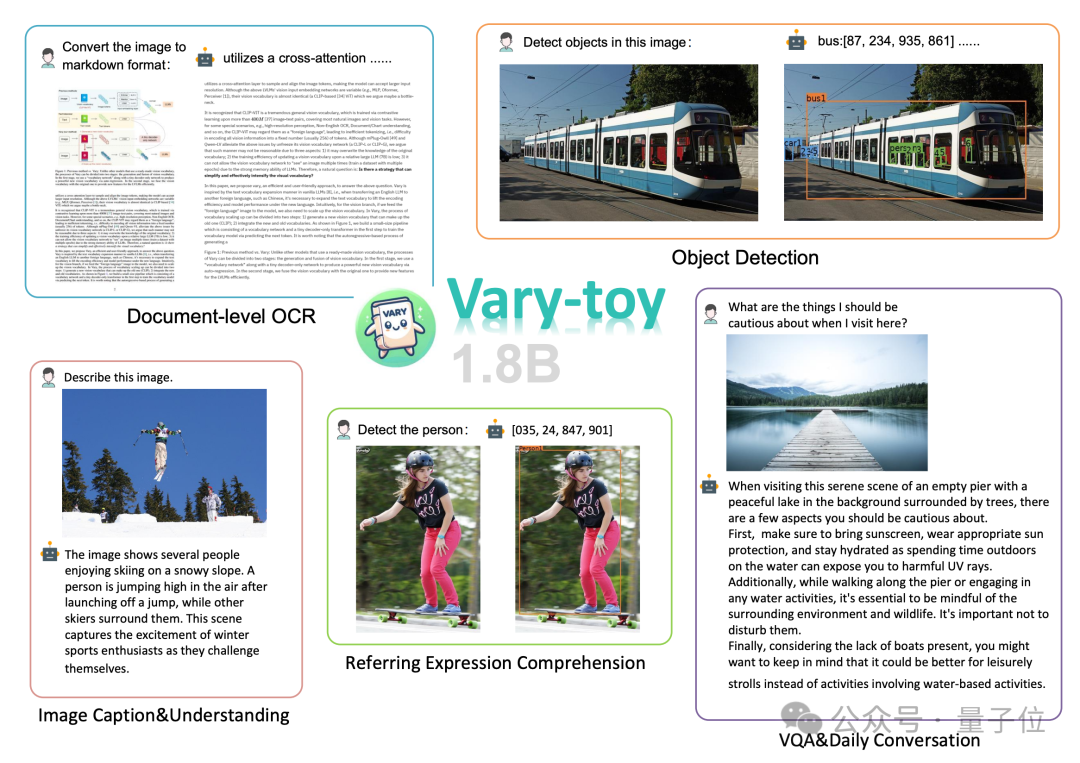
Now, the Vary-toy code and model are open source, and there is an online demo available for trial play.
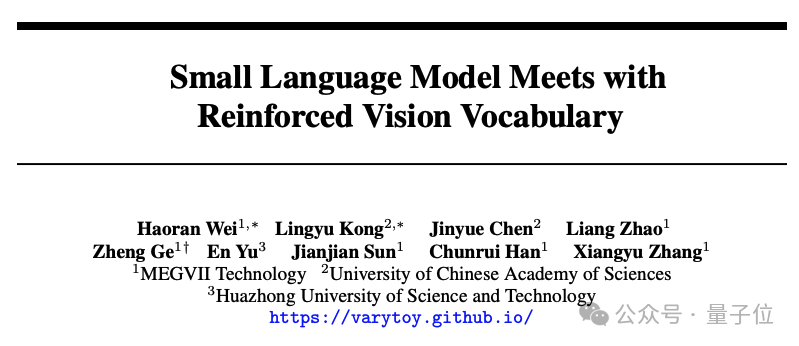
While netizens expressed interest, they also focused on 老·GTX1080 and felt like:
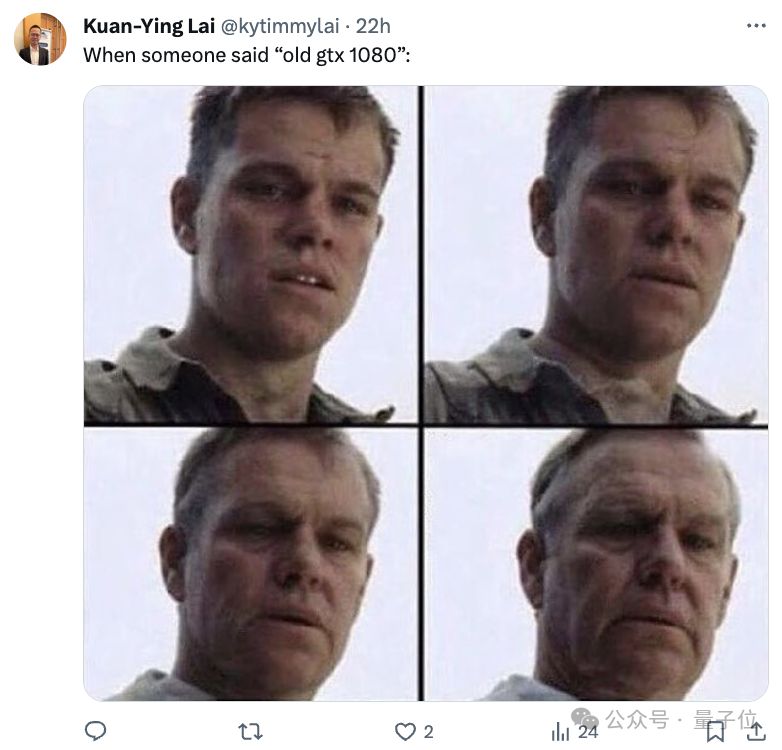
“Shrinking version” Vary
In fact, the Vary team released Vary’s first research result “Vary: Scaling up the Vision Vocabulary for Large Vision-Language Models” as early as December last year.
The researchers pointed out the shortcomings of CLIP visual vocabulary in dense perception capabilities, and used a simple and effective vocabulary expansion scheme to provide a new OCR paradigm.
Vary has received widespread attention since its release. Currently, it has 1.2k stars on Github, but many people cannot run it due to limited resources.
Considering that there are relatively few “small” VLMs that are well open sourced and have excellent performance, the team has newly released Vary-toy, which is known as “young people’s first multi-mode large model”.
Compared with Vary, Vary-toy is not only small, but also trains a stronger visual vocabulary. The new vocabulary no longer limits the model to document-level OCR, but It provides a more universal and comprehensive visual vocabulary, which can not only do document-level OCR, but also general visual target detection. So how is this done?
The model structure and training process of Vary-toy are shown in the figure below. In general, the training is divided into two stages.
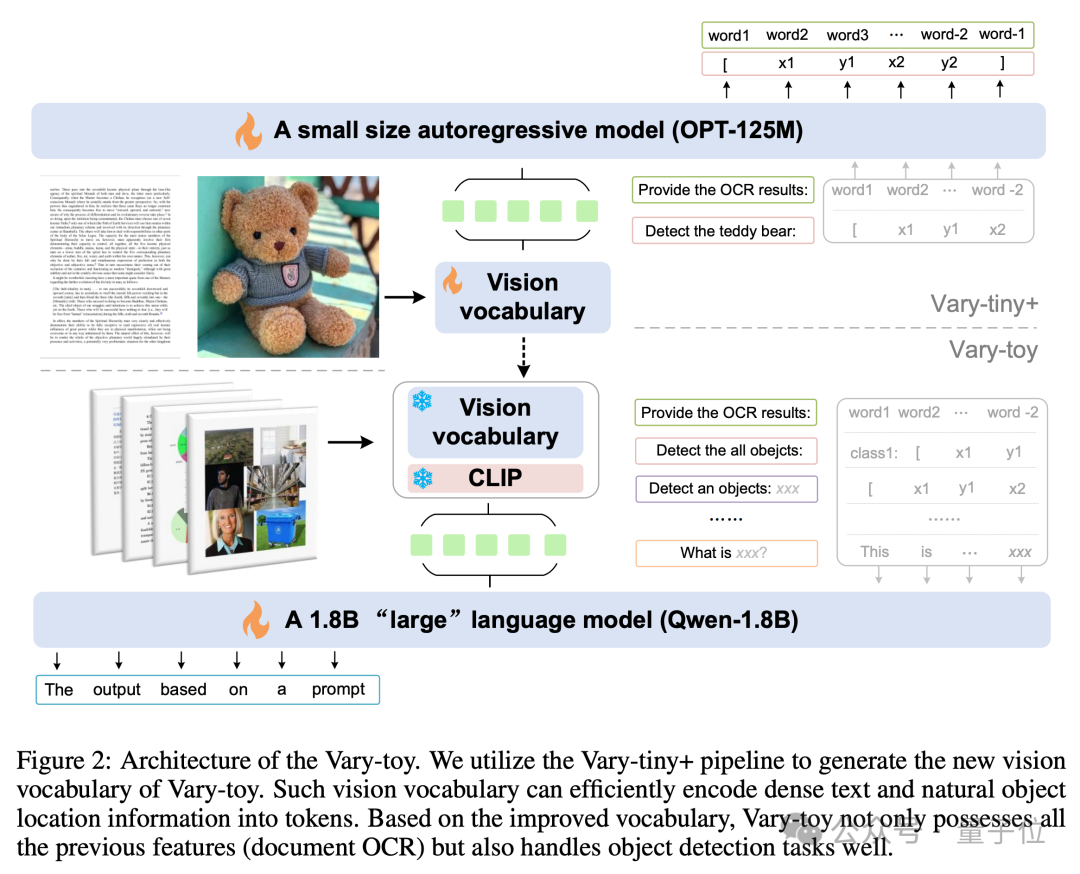 First of all, in the first stage, the Vary-tiny structure is used to pre-train a visual vocabulary that is better than the original Vary. The new visual vocabulary solves the problem of the original Vary. Vary only uses it for document-level OCR, which has the problem of wasting network capacity and not fully utilizing the advantages of SAM pre-training.
First of all, in the first stage, the Vary-tiny structure is used to pre-train a visual vocabulary that is better than the original Vary. The new visual vocabulary solves the problem of the original Vary. Vary only uses it for document-level OCR, which has the problem of wasting network capacity and not fully utilizing the advantages of SAM pre-training.
Then in the second stage, the visual vocabulary trained in the first stage is merged into the final structure for multi-task training/SFT.
As we all know, a good data ratio is crucial to produce a VLM with comprehensive capabilities.
Therefore, in the pre-training stage, Vary-toy used data from 5 task types to construct dialogues. The data ratio and example prompt are as shown in the figure below:
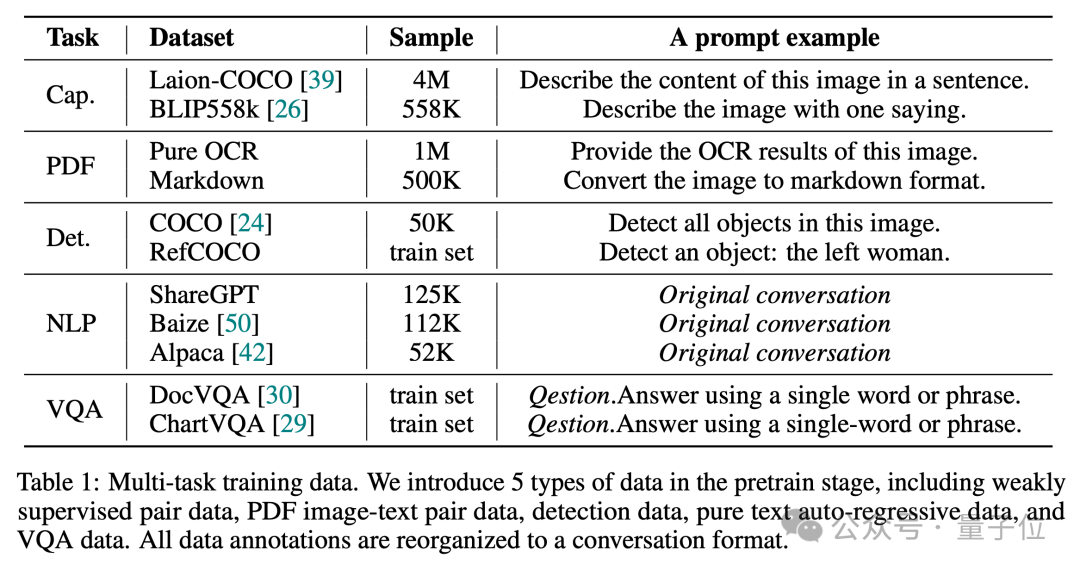 In the SFT stage, only LLaVA-80K data is used. For more technical details, please view Vary-toy’s technical report.
In the SFT stage, only LLaVA-80K data is used. For more technical details, please view Vary-toy’s technical report.
Experimental test results
The scores of Vary-toy in the four benchmark tests of DocVQA, ChartQA, RefCOCO, and MMVet are as follows:
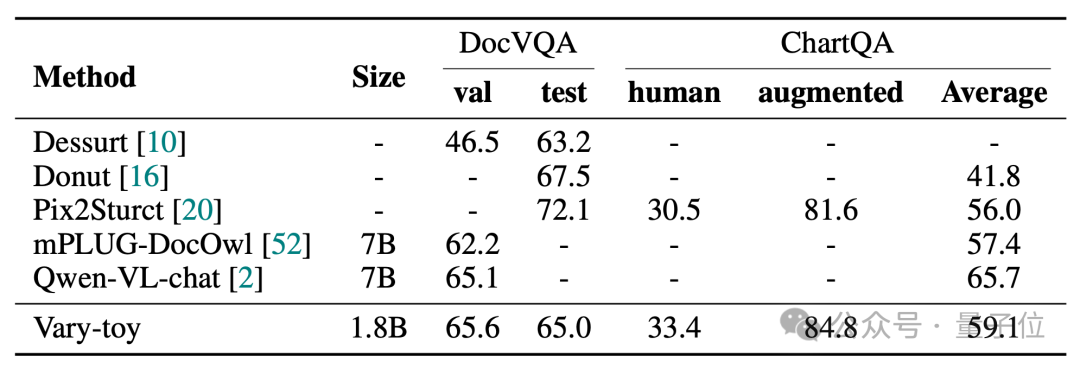
Vary-toy can achieve 65.6% ANLS on DocVQA, 59.1% accuracy on ChartQA, and 88.1% accuracy on RefCOCO:
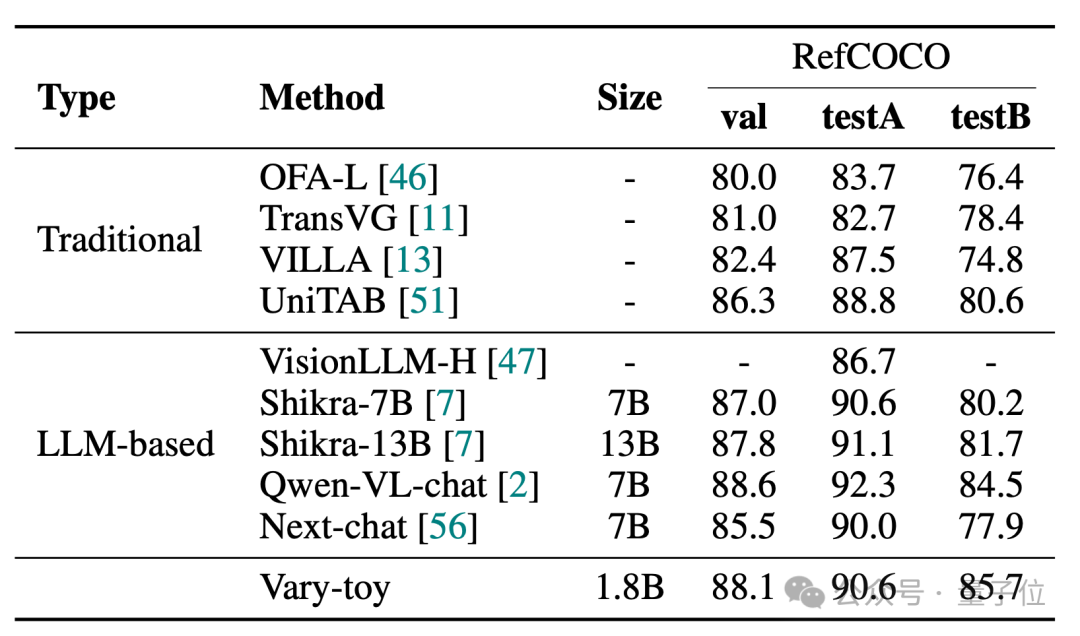
MMVet can reach 29% accuracy. Whether it is in terms of benchmark scores or visualization effects, Vary-toy, which is less than 2B, can even compete with the performance of some popular 7B models. .
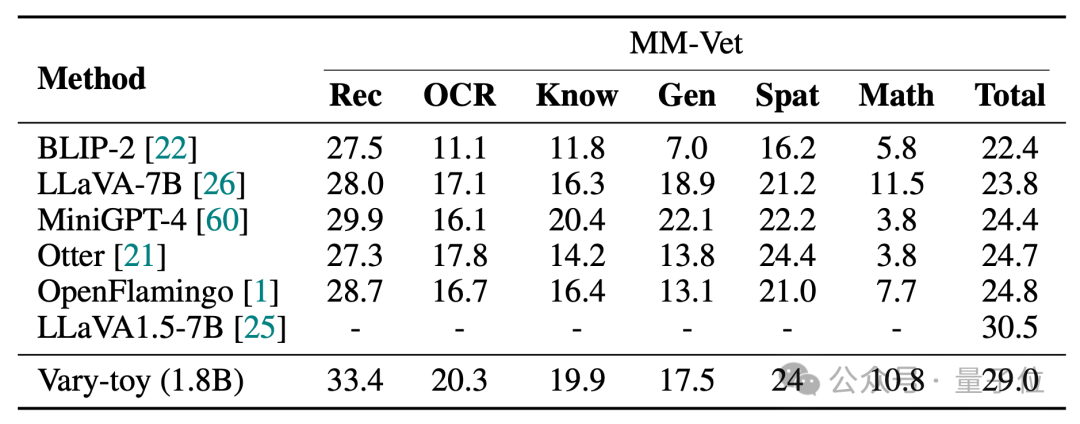
Project link:
[1]https://arxiv.org/abs/2401.12503
[3] https://varytoy.github.io/
The above is the detailed content of Multi-modal large models are preferred by young people online with open source: easily run 1080Ti. For more information, please follow other related articles on the PHP Chinese website!

Hot AI Tools

Undresser.AI Undress
AI-powered app for creating realistic nude photos

AI Clothes Remover
Online AI tool for removing clothes from photos.

Undress AI Tool
Undress images for free

Clothoff.io
AI clothes remover

Video Face Swap
Swap faces in any video effortlessly with our completely free AI face swap tool!

Hot Article

Hot Tools

Notepad++7.3.1
Easy-to-use and free code editor

SublimeText3 Chinese version
Chinese version, very easy to use

Zend Studio 13.0.1
Powerful PHP integrated development environment

Dreamweaver CS6
Visual web development tools

SublimeText3 Mac version
God-level code editing software (SublimeText3)

Hot Topics
 1386
1386
 52
52
 Open source! Beyond ZoeDepth! DepthFM: Fast and accurate monocular depth estimation!
Apr 03, 2024 pm 12:04 PM
Open source! Beyond ZoeDepth! DepthFM: Fast and accurate monocular depth estimation!
Apr 03, 2024 pm 12:04 PM
0.What does this article do? We propose DepthFM: a versatile and fast state-of-the-art generative monocular depth estimation model. In addition to traditional depth estimation tasks, DepthFM also demonstrates state-of-the-art capabilities in downstream tasks such as depth inpainting. DepthFM is efficient and can synthesize depth maps within a few inference steps. Let’s read about this work together ~ 1. Paper information title: DepthFM: FastMonocularDepthEstimationwithFlowMatching Author: MingGui, JohannesS.Fischer, UlrichPrestel, PingchuanMa, Dmytr
 The world's most powerful open source MoE model is here, with Chinese capabilities comparable to GPT-4, and the price is only nearly one percent of GPT-4-Turbo
May 07, 2024 pm 04:13 PM
The world's most powerful open source MoE model is here, with Chinese capabilities comparable to GPT-4, and the price is only nearly one percent of GPT-4-Turbo
May 07, 2024 pm 04:13 PM
Imagine an artificial intelligence model that not only has the ability to surpass traditional computing, but also achieves more efficient performance at a lower cost. This is not science fiction, DeepSeek-V2[1], the world’s most powerful open source MoE model is here. DeepSeek-V2 is a powerful mixture of experts (MoE) language model with the characteristics of economical training and efficient inference. It consists of 236B parameters, 21B of which are used to activate each marker. Compared with DeepSeek67B, DeepSeek-V2 has stronger performance, while saving 42.5% of training costs, reducing KV cache by 93.3%, and increasing the maximum generation throughput to 5.76 times. DeepSeek is a company exploring general artificial intelligence
 AI subverts mathematical research! Fields Medal winner and Chinese-American mathematician led 11 top-ranked papers | Liked by Terence Tao
Apr 09, 2024 am 11:52 AM
AI subverts mathematical research! Fields Medal winner and Chinese-American mathematician led 11 top-ranked papers | Liked by Terence Tao
Apr 09, 2024 am 11:52 AM
AI is indeed changing mathematics. Recently, Tao Zhexuan, who has been paying close attention to this issue, forwarded the latest issue of "Bulletin of the American Mathematical Society" (Bulletin of the American Mathematical Society). Focusing on the topic "Will machines change mathematics?", many mathematicians expressed their opinions. The whole process was full of sparks, hardcore and exciting. The author has a strong lineup, including Fields Medal winner Akshay Venkatesh, Chinese mathematician Zheng Lejun, NYU computer scientist Ernest Davis and many other well-known scholars in the industry. The world of AI has changed dramatically. You know, many of these articles were submitted a year ago.
 Slow Cellular Data Internet Speeds on iPhone: Fixes
May 03, 2024 pm 09:01 PM
Slow Cellular Data Internet Speeds on iPhone: Fixes
May 03, 2024 pm 09:01 PM
Facing lag, slow mobile data connection on iPhone? Typically, the strength of cellular internet on your phone depends on several factors such as region, cellular network type, roaming type, etc. There are some things you can do to get a faster, more reliable cellular Internet connection. Fix 1 – Force Restart iPhone Sometimes, force restarting your device just resets a lot of things, including the cellular connection. Step 1 – Just press the volume up key once and release. Next, press the Volume Down key and release it again. Step 2 – The next part of the process is to hold the button on the right side. Let the iPhone finish restarting. Enable cellular data and check network speed. Check again Fix 2 – Change data mode While 5G offers better network speeds, it works better when the signal is weaker
 Hello, electric Atlas! Boston Dynamics robot comes back to life, 180-degree weird moves scare Musk
Apr 18, 2024 pm 07:58 PM
Hello, electric Atlas! Boston Dynamics robot comes back to life, 180-degree weird moves scare Musk
Apr 18, 2024 pm 07:58 PM
Boston Dynamics Atlas officially enters the era of electric robots! Yesterday, the hydraulic Atlas just "tearfully" withdrew from the stage of history. Today, Boston Dynamics announced that the electric Atlas is on the job. It seems that in the field of commercial humanoid robots, Boston Dynamics is determined to compete with Tesla. After the new video was released, it had already been viewed by more than one million people in just ten hours. The old people leave and new roles appear. This is a historical necessity. There is no doubt that this year is the explosive year of humanoid robots. Netizens commented: The advancement of robots has made this year's opening ceremony look like a human, and the degree of freedom is far greater than that of humans. But is this really not a horror movie? At the beginning of the video, Atlas is lying calmly on the ground, seemingly on his back. What follows is jaw-dropping
 KAN, which replaces MLP, has been extended to convolution by open source projects
Jun 01, 2024 pm 10:03 PM
KAN, which replaces MLP, has been extended to convolution by open source projects
Jun 01, 2024 pm 10:03 PM
Earlier this month, researchers from MIT and other institutions proposed a very promising alternative to MLP - KAN. KAN outperforms MLP in terms of accuracy and interpretability. And it can outperform MLP running with a larger number of parameters with a very small number of parameters. For example, the authors stated that they used KAN to reproduce DeepMind's results with a smaller network and a higher degree of automation. Specifically, DeepMind's MLP has about 300,000 parameters, while KAN only has about 200 parameters. KAN has a strong mathematical foundation like MLP. MLP is based on the universal approximation theorem, while KAN is based on the Kolmogorov-Arnold representation theorem. As shown in the figure below, KAN has
 The vitality of super intelligence awakens! But with the arrival of self-updating AI, mothers no longer have to worry about data bottlenecks
Apr 29, 2024 pm 06:55 PM
The vitality of super intelligence awakens! But with the arrival of self-updating AI, mothers no longer have to worry about data bottlenecks
Apr 29, 2024 pm 06:55 PM
I cry to death. The world is madly building big models. The data on the Internet is not enough. It is not enough at all. The training model looks like "The Hunger Games", and AI researchers around the world are worrying about how to feed these data voracious eaters. This problem is particularly prominent in multi-modal tasks. At a time when nothing could be done, a start-up team from the Department of Renmin University of China used its own new model to become the first in China to make "model-generated data feed itself" a reality. Moreover, it is a two-pronged approach on the understanding side and the generation side. Both sides can generate high-quality, multi-modal new data and provide data feedback to the model itself. What is a model? Awaker 1.0, a large multi-modal model that just appeared on the Zhongguancun Forum. Who is the team? Sophon engine. Founded by Gao Yizhao, a doctoral student at Renmin University’s Hillhouse School of Artificial Intelligence.
 FisheyeDetNet: the first target detection algorithm based on fisheye camera
Apr 26, 2024 am 11:37 AM
FisheyeDetNet: the first target detection algorithm based on fisheye camera
Apr 26, 2024 am 11:37 AM
Target detection is a relatively mature problem in autonomous driving systems, among which pedestrian detection is one of the earliest algorithms to be deployed. Very comprehensive research has been carried out in most papers. However, distance perception using fisheye cameras for surround view is relatively less studied. Due to large radial distortion, standard bounding box representation is difficult to implement in fisheye cameras. To alleviate the above description, we explore extended bounding box, ellipse, and general polygon designs into polar/angular representations and define an instance segmentation mIOU metric to analyze these representations. The proposed model fisheyeDetNet with polygonal shape outperforms other models and simultaneously achieves 49.5% mAP on the Valeo fisheye camera dataset for autonomous driving



